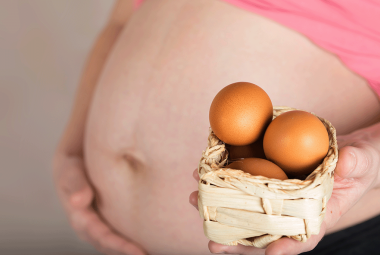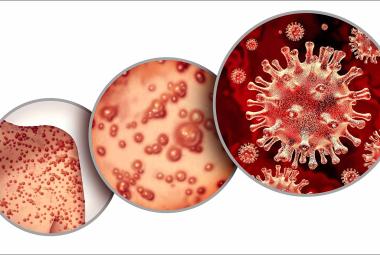This article will address women with Opioid Use Disorders (OUDs): concerns, considerations, and debunking of common myths. It will provide information regarding current research findings in recovery and Medication-Assisted Treatment (MAT). MAT includes buprenorphine (Brand name: Subutex), combination buprenorphine-naloxone (brand name: Suboxone), or, the previous gold standard of care, methadone.1
In This Article
An Overview of the Current Opioid Epidemic
Methadone versus Buprenorphine
Opioid Use Disorder (OUD) in Pregnancy
Drug Testing in Pregnant Women
Medication-Assisted Treatment (MAT) in Pregnancy
Labor, Delivery, and Neonatal Abstinence Syndrome (NAS)
An Overview of the Current Opioid Epidemic
Opioid overdose alone is the number one cause of death in adults under 50 years old.2
It's not cancer.
It's not gun violence.
It's not suicide.
It's not even COVID.
The number one killer of adults under 50 years old is opioid overdose.2 In 2021 there were over 100,000 deaths from overdose alone. Of those 100,000, the estimated overdose deaths from opioids accounted for 75,673, up from 56,064 the year before.3
Studies show people with opioid use disorder who follow detoxification with complete abstinence are likely to relapse.4 For example, Bailey, et al. reported that following inpatient detoxification:5
- more than 1 in 4 patients relapsed the day they were discharged,
- 2 of 3 patients relapsed within a month of discharge, and
- 9 of 10 patients relapsed within a year of their release.
There is a need for an alternative treatment method that relies on more than abstinence. This is where Medication-Assisted Treatments (like methadone or buprenorphine) can really make a difference.
Methadone versus Buprenorphine
Methadone is a full agonist of the µ-opioid receptor, yet it is not as strong as other opioids. Still, it binds tightly to the receptor, preventing other opioids from acting at the receptor while also protecting against craving and withdrawal.6 It has been the gold standard for treating OUD since the 1970's.7
Buprenorphine, on the other hand, is a partial agonist of the µ-opioid receptor and an antagonist of the κ-opioid receptor, giving it a different safety profile. Like methadone, it is a useful agent for postponing withdrawal and overcoming cravings.8 Additionally, it is being studied for its positive effect on mood and mood disorders.9 Buprenorphine has been used in the United States for OUD since 2002.
Sometimes buprenorphine is combined with naloxone as the brand name Suboxone. The naloxone component is a very strong opioid antagonist that is completely inactive if taken as directed (under the tongue or cheek). However, if Suboxone is injected, the naloxone component will become active and the user will have significant withdrawal symptoms. For that reason, a combined product (buprenorphine and naloxone) may be prescribed to discourage improper intravenous or intranasal use of buprenorphine, as these routes could potentially be dangerous to the user.
According to a comprehensive Cochrane review comparing buprenorphine, methadone, and placebo, methadone and buprenorphine are equally effective at reducing opioid use, and both are more effective than placebo.10
Opioid Use Disorder (OUD) in Pregnancy
There is a stigma that surrounds individuals with addiction. Women with addiction experience this stigma stronger than others. And there is likely no one group more stigmatized than pregnant women with addiction.
A popular myth is that women recovering from drug addictions are not good mothers. That is simply not true. However, addiction is still a concern that should be addressed.
Addicted pregnant women are the most vulnerable to absorbing shame and stigma, which are significant deterrents in seeking help or receiving good treatment. However, with a loving and supportive environment along with good medical care, these women can have normal and comfortable pregnancies, deliver healthy babies, and be wonderful mothers.
Drug Testing in Pregnant Women
When expecting mothers visit their obstetrician, they will likely be tested for illicit substances.
Many women might fear the legal consequences of such tests and choose to avoid doctors and neglect prenatal care rather than submit to a drug test. Be that as it may, it is of the utmost importance pregnant women are always open and honest with their physicians about drug use. Physicians are not policemen/policewomen. They will not arrest or chastise someone for using drugs. Ideally, physicians will be understanding of the disease at hand while offering support and guidance. They need to know about illicit substances because it affects their treatment plans moving forward. For example, some physicians may recommend medications like methadone or buprenorphine for OUD. They may even prescribe naloxone nasal spray to be used in the setting of accidental overdose. Additionally, physicians may attempt to address psychosocial factors such as anxiety, stress, depression, living arrangements, or the pregnant woman's subjective feelings of safety. Addressing all of these aspects early in the pregnancy is in everyones (including the unborn child's) best interest.
OUD in Pregnancy (Continued)
Pregnant women addicted to short-acting opioids (heroin, codeine, hydrocodone, oxycodone, oxymorphone, etc.) should stop using these drugs if possible. If it is not possible, they should limit the drugs as much as possible. The risk of overdose is extremely high, especially with many of these street opioids being "cut with", or containing, varying amounts of the highly potent and dangerous fentanyl.11
Some women who become pregnant while addicted to opioids may want to stop using on their own in secrecy. This practice is risky for several reasons. Going through opioid withdrawal is a notoriously uncomfortable experience. When a mother withdraws from opioids, her fetus will also experience withdrawal by proxy,
Even if the mother can detox herself successfully, studies show that 8 out of 10 pregnant women return to drug use within a month after detoxing on their own. These women are at a much greater risk of overdose when they return to use.12 The periods of detoxification and re-toxification put the mother on a harrowing roller coaster that is hard on the adult body and the developing fetus. Fluctuating periods of intoxication and withdrawal have been associated with smaller babies, separation of the placenta from the wall of the uterus (known as placental abruption), seizures in the fetus, fetal passage of stool into the amniotic fluid leading to lung infections, preterm labor13, and, sometimes, miscarriage or stillbirth.14
Untreated addiction in pregnant women is also linked to higher-risk behaviors that put the woman and her baby in danger. High-risk behaviors include prostitution, crime, sexually transmitted infections, violence, incarceration, and other social/legal troubles.15
Buprenorphine or methadone become attractive options for women addicted to opioids during pregnancy. Indeed, both buprenorphine and methadone are opioids. However, they are long-acting opioids which provide smooth, clean, and predictable coverage of the opioid receptors. They are much safer alternatives to the up-and-down toxicity of short-acting drugs like heroin or other prescription pain killers.
Medication-Assisted Treatment (MAT) in Pregnancy
Offering Medication-Assisted Treatment (MAT) with methadone or buprenorphine during pregnancy and breastfeeding is the recommended best practice. These medications stop withdrawal, stave off cravings, and prevent further use of illicit opioids.16 Under proper supervision, the use of MAT, without question, reduces risks associated with opioid use during pregnancy and labor. Both medications are generally considered safe for the fetus too. Having MAT on the treatment plan can give the mother a chance to focus on good prenatal care along with her addiction treatment and recovery goals. In addition, counseling with a psychiatrist or therapist is recommended with MAT therapy.16
Preferred MAT in Pregnancy
Methadone has been the standard of care in pregnancy since 1998.17 Recent evidence suggests that buprenorphine may be an even better alternative.18
The chart below summarizes some of the similarities and differences between the two Medication-Assisted Treatments.
Chart: Buprenorphine versus Methadone in Pregnancy 17, 18, 19
| Methadone | Buprenorphine | |
| Patient Preference | Provided by methadone clinics | Provided by qualified physician in office |
| Risk of overdose death | Higher | Lower (but not absent) |
| Risk of drug interaction | Higher | Lower (but not absent) |
|
Frequency of Neonatal |
Higher | Lower (by 10%) |
| How long NAS lasts | Longer | Shorter (8.4 days) |
| Amount of morphine used for NAS | More | Less (an average of 3.6 mg) |
| Breastfeeding | Safe | Safe |
| Gestational Age | Lower | Higher |
| Weight at birth | Lower | Higher |
| Head size at birth | Lower | Higher |
Note: if a woman becomes pregnant while already being treated with methadone, she should remain on methadone.
As with all opioids, buprenorphine and methadone cross the placenta and reach the fetus, resulting in some fetal health risk. Smaller birth weight is the most predictable consequence.18
Labor, Delivery, and Neonatal Abstinence Syndrome (NAS)
In mothers treated with MAT, labor and delivery is not that different from traditional labor and delivery. However, there are some critical considerations. Childbirth is a painful experience. Most women have a pain management plan for childbirth, such as having an epidural or using other narcotics to assist with pain. Using a long-acting opioid like buprenorphine or methadone may not be enough to overcome the pain of childbirth. Some pain medications commonly given during labor, like butorphanol or nalbuphine, may cause acute withdrawal in laboring women taking buprenorphine or methadone.20 Because of this factor, mothers using MAT must have proper communication with their health care providers about their treatment regimen so their pain can be controlled adequately during labor and delivery.
After the baby is born, the baby will likely experience opioid withdrawal, a phenomenon known as Neonatal Abstinence Syndrome (NAS).21 NAS is not permanent but can require the newborn to stay in the nursery or neonatal intensive care unit. The infant may be treated with a low-dose opioid with decreasing daily doses. This process may last days or even weeks. NAS can look painful for the baby. Symptoms include tremors, crying, fussiness, poor feeding, diarrhea, etc. Nurseries and NICUs have opioid weaning protocols to make sure the baby is as comfortable as possible while they wean. The symptoms are usually the most severe 2 or 3 days after delivery and then improve.
MAT While Breastfeeding
The Academy of Breastfeeding Medicine (ABM), the American Academy of Pediatrics (AAP), and the American College of Obstetricians and Gynecologists (ACOG) all recommend breastfeeding for women who are stable on MAT, barring other contraindications, such as HIV infection or current dangerous substance use, like alcohol, methamphetamines, cocaine, heroin, or other pain killers.14,22-23 These recommendations are irrespective of the dose, although the infant must be observed for any sign of sedative effects.
There are substantial benefits from breastfeeding to both mother and infant.24 Additionally, the amounts of methadone or buprenorphine in human milk are small and unlikely to have short-term negative effects on the developing infant. Therefore, all new mothers are encouraged to breastfeed. 25-26
Some sources recommend limiting doses of methadone to 60 to 100 mg daily for breastfeeding women.27 For the breastfeeding infant, 60 to 100 mg daily equates to 1% to 3% of a maternal weight-adjusted methadone dose to the infant (relative infant dose, or RID), sometimes 5% to 6% in a few cases.25 Although rare, there is a possible risk of slowing the breastfed infant's breathing to a dangerous rate, especially if the infant was not exposed to methadone in utero or if the maternal doses of methadone are higher than 100 mg daily.25
Current dosing regimens for buprenorphine in MAT range from 8 to 32 mg daily.28 Buprenorphine alone or the buprenorphine component of Suboxone both have poor oral bioavailability. Therefore, buprenorphine is given sublingually (under the tongue) and has peak effects 60 to 90 minutes after a dose. Only 30% to 40% of the drug reaches the mother's circulating blood. The infant receives very little of the drug through milk. Based on the average levels of drugs found in human milk, an exclusively breastfed infant would receive less than 1% of the maternal weight-adjusted dosage (RID). Clarification: this is not 1% of mom's dose, but 1% of an infant-sized dose. Therefore, its use is considered acceptable.26 The naloxone component of Suboxone is not present in milk and would present no harm regardless.29
Although unlikely, if the baby displays increased sleepiness, difficulty breathing, latching or breastfeeding, or limpness, he/she may be suffering from opioid intoxication. If these rare signs or symptoms occur, the baby should be taken to the emergency room, and his/her pediatrician should be contacted.
The Weeks that Follow
The weeks and months after a baby is born are high risk for mothers, especially those in recovery. It is a stressful time for women in general and even more so for those in recovery. One of the leading risk factors for relapse is stress. Few things are more stressful than bringing a new baby into the world. Moms will need a lot of support, love, and care. They should be encouraged to continue breastfeeding, continue treatment, and check out parent support groups, therapy/counseling, relapse prevention programs, and/or twelve-step fellowships like Narcotic Anonymous (NA).
Pregnancy and the postpartum period, even when breastfeeding, is NOT the time to stop stable medication-assisted therapy. The longer women stay on the medication, the more likely they are to adhere to an illicit drug-free lifestyle and be there for their families and growing infant. Some mothers may require indefinite MAT, while others may not. The decision to discontinue therapy should be discussed with their providers. The best treatment regimen is ultimately the one that keeps the mother in recovery to maintain a full and meaningful life.
Ethan Evans, MS4
Emily Conard, P4
Kaytlin Krutsch, PharmD
References
- Connery HS. Medication-assisted treatment of opioid use disorder. Harvard Review of Psychiatry. 2015;23(2):63-75. doi:10.1097/hrp.0000000000000075
- Reynolds D. Overdoses now leading cause of death of Americans under 50. CBS News. https://www.cbsnews.com/news/overdoses-are-leading-cause-of-death-ameri…. Published June 7, 2017. Accessed March 23, 2022.
- Drug overdose deaths in the U.S. top 100,000 annually. Centers for Disease Control and Prevention. https://www.cdc.gov/nchs/pressroom/nchs_press_releases/2021/20211117.htm. Published November 17, 2021. Accessed March 23, 2022.
- Bart G. Maintenance medication for opiate addiction: The Foundation of Recovery. Journal of Addictive Diseases. 2012;31(3):207-225. doi:10.1080/10550887.2012.694598
- Bailey GL, Herman DS, Stein MD. Perceived relapse risk and desire for medication assisted treatment among persons seeking inpatient opiate detoxification. Journal of Substance Abuse Treatment. 2013;45(3):302-305. doi:10.1016/j.jsat.2013.04.002
- Durrani M. Methadone. StatPearls [Internet]. https://www.ncbi.nlm.nih.gov/books/NBK562216/. Published February 12, 2022. Accessed March 23, 2022.
- ASAM - American Society of Addictin Medicine. Regulation of the treatment of opioid use disorder with methadone. Default. https://www.asam.org/advocacy/public-policy-statements/details/public-p…. Published November 16, 2021. Accessed March 23, 2022.
- Cowan A. Buprenorphine: The basic pharmacology revisited. Journal of Addiction Medicine. 2007;1(2):68-72. doi:10.1097/adm.0b013e31806c9202
- Falcon E, Browne CA, Leon RM, et al. Antidepressant-like effects of buprenorphine are mediated by kappa opioid receptors. Neuropsychopharmacology. 2016;41(9):2344-2351. doi:10.1038/npp.2016.38
- Mattick RP, Kimber J, Breen C, Davoli M. Buprenorphine maintenance versus placebo or methadone maintenance for opioid dependence. Cochrane Database of Systematic Reviews. 2003. doi:10.1002/14651858.cd002207
- Fentanyl facts. Centers for Disease Control and Prevention. https://www.cdc.gov/stopoverdose/fentanyl/index.html. Published February 23, 2022. Accessed March 23, 2022.
- Pregnancy opioids guide - partnership to end addiction. https://drugfree.org/wp-content/uploads/2018/03/Pregnancy-Opioids-Guide…. Accessed March 23, 2022.
- Kaltenbach K, Berghella V, Finnegan L. Opioid dependence during pregnancy. Obstetrics and Gynecology Clinics of North America. 1998;25(1):139-151. doi:10.1016/s0889-8545(05)70362-4
- Committee on Obstetric Practice American Society of Addiction Medicine:The Society of Maternal–Fetal Medicine endorses this document. This Committee Opinion was developed by the American College of Obstetricians and Gynecologists' Committee on Obstetric P. Committee opinion no. 711: Opioid use and opioid use... : Obstetrics & Gynecology. LWW. https://doi.org/10.1097/aog.0000000000002235. Accessed March 23, 2022.
- Opioid use and opioid use disorder in pregnancy. ACOG. https://www.acog.org/clinical/clinical-guidance/committee-opinion/artic…. Accessed March 23, 2022.
- Tran TH, Griffin BL, Stone RH, Vest KM, Todd TJ. Methadone, buprenorphine, and naltrexone for the treatment of opioid use disorder in pregnant women. Pharmacotherapy: The Journal of Human Pharmacology and Drug Therapy. 2017;37(7):824-839. doi:10.1002/phar.1958
- National Consensus Development Panel on Effective Medical Treatment of Opiate Addiction. Effective medical treatment of opiate addiction. JAMA: The Journal of the American Medical Association. 1998;280(22):1936-1943. doi:10.1001/jama.280.22.1936
- Brogly SB, Saia KA, Walley AY, Du HM, Sebastiani P. Prenatal buprenorphine versus methadone exposure and neonatal outcomes: Systematic review and meta-analysis. American Journal of Epidemiology. 2014;180(7):673-686. doi:10.1093/aje/kwu190
- Mozurkewich EL, Rayburn WF. Buprenorphine and methadone for opioid addiction during pregnancy. Obstetrics and Gynecology Clinics of North America. 2014;41(2):241-253. doi:10.1016/j.ogc.2014.02.005
- Jones HE, O'Grady K, Dahne J, et al. Management of acute postpartum pain in patients maintained on methadone or buprenorphine during pregnancy. Am J Drug Alcohol Abuse. 2009;35(3):151-156. doi:10.1080/00952990902825413
- Fajemirokun-Odudeyi O, Sinha C, Tutty S, et al. Pregnancy outcome in women who use opiates. Eur J Obstet Gynecol Reprod Biol. 2006;126(2):170-175. doi:10.1016/j.ejogrb.2005.08.010
- Section on Breastfeeding. Breastfeeding and the use of human milk. Pediatrics. 2012;129(3):e827-e841. doi:10.1542/peds.2011-3552
- Reece-Stremtan S, Marinelli KA. ABM clinical protocol #21: guidelines for breastfeeding and substance use or substance use disorder, revised 2015. Breastfeed Med. 2015;10(3):135-141. doi:10.1089/bfm.2015.9992
- Breastfeeding benefits both baby and mom. Centers for Disease Control and Prevention. https://www.cdc.gov/nccdphp/dnpao/features/breastfeeding-benefits/index…. Published July 27, 2021. Accessed March 25, 2022.
- Methadone. Drugs and Lactation Database (LactMed) [Internet]. https://www.ncbi.nlm.nih.gov/books/NBK501233/. Published June 21, 2021. Accessed March 24, 2022.
- Buprenorphine. Drugs and Lactation Database (LactMed) [Internet]. https://www.ncbi.nlm.nih.gov/books/NBK501202/. Published February 15, 2021. Accessed March 24, 2022.
- Fareed A, Casarella J, Amar R, Vayalapalli S, Drexler K. Methadone maintenance dosing guideline for opioid dependence, a literature review. J Addict Dis. 2010;29(1):1-14. doi:10.1080/10550880903436010
- Stahl SM, Grady MM, Muntner N. Buprenorphine. In: Stahl's Essential Psychopharmacology: Prescriber's Guide Sixth Edition. Cambridge University Press; 2017:101-105.
- Naloxone. Drugs and Lactation Database (LactMed) [Internet]. https://www.ncbi.nlm.nih.gov/books/NBK501681/. Published July 20, 2020. Accessed March 24, 2022.







